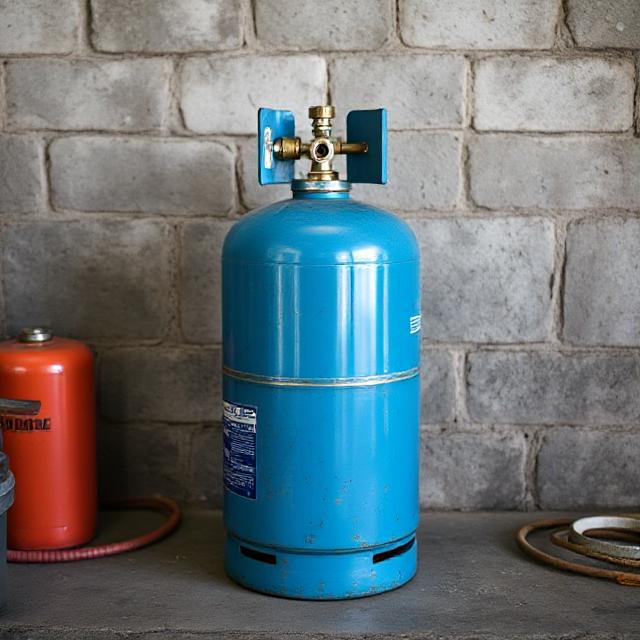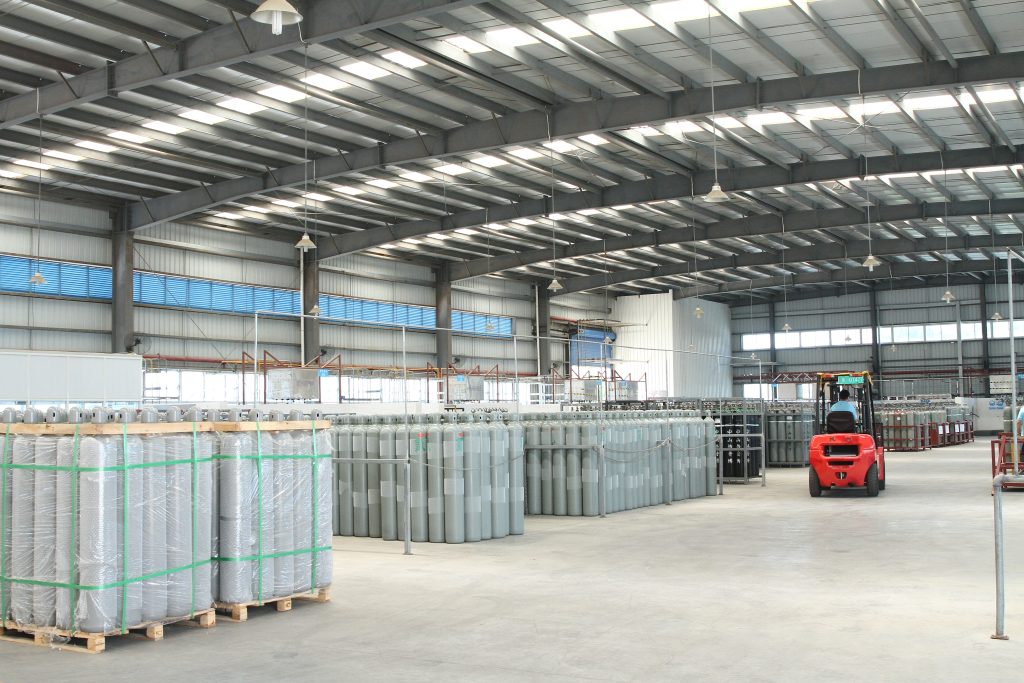1. Introduction
Helium is widely used in industrial, medical, and entertainment applications, but many people wonder: Is helium flammable or explosive? Given its role in balloons, MRI machines, and aerospace technology, understanding helium’s safety properties is crucial.
This article will clarify whether helium can catch fire or explode, its chemical properties, and important safety considerations when handling this gas.

2. What is Helium?
Helium (He) is a colorless, odorless, and tasteless gas that belongs to the noble gas group on the periodic table. It is known for its low density, non-reactivity, and ability to remain in a gaseous state under standard conditions.

Key Properties of Helium:
- CAS Number: 7440-59-7
- UN Number: 1963
- EINECS Number: 231-168-5
- Molecular Weight: 4.0026
- Appearance: Colorless, odorless gas
- Melting Point: -272.2°C
- Boiling Point: -268.60°C
- Density: 0.1786 kg/cm³
- DOT Class: 2.2 (Non-flammable Gas)
3. Is Helium Flammable?
No, helium is not flammable. It does not burn, ignite, or support combustion.
Why is helium non-flammable?
- Chemical Stability: Helium is a noble gas, meaning it has a full outer electron shell, making it chemically inert.
- Lack of Reactivity: It does not react with oxygen, preventing combustion.
- DOT Classification: It is classified as a Class 2.2 non-flammable gas, ensuring it does not pose a fire hazard.
Many people mistake helium for hydrogen, which is flammable. However, helium is completely safe in terms of fire hazards.
4. Can Helium Be Explosive?
While helium does not explode due to combustion, it can cause physical explosions under high pressure.
How Can Helium Tanks Explode?
Helium itself is safe, but improper handling of helium tanks can lead to dangerous explosions due to pressure buildup.
- Over-Pressurization: If a helium tank is damaged or heated, the pressure inside may increase to dangerous levels, causing the tank to rupture violently.
- Physical Damage: Dropping or puncturing a high-pressure cylinder can lead to a sudden release of gas, turning the tank into a high-speed projectile.
- Extreme Temperatures: Exposure to high heat (such as in a fire) can cause tank expansion and rupture.
Safety Precautions:
- Store helium tanks in a cool, ventilated area.
- Avoid overfilling helium cylinders.
- Use proper regulators and pressure-release valves.
- Do not expose helium tanks to direct sunlight or heat sources.
5. Safety Considerations When Handling Helium
While helium is safe, it is important to handle it responsibly.
Key Safety Guidelines:
- Avoid Inhaling Helium: Inhaling helium can displace oxygen, leading to asphyxiation or dizziness.
- Secure Helium Cylinders: Always keep tanks upright and secured to prevent tipping.
- Check for Leaks: Regularly inspect tubes, valves, and fittings for leaks.
- Use Proper Equipment: When using helium for industrial or medical applications, ensure tubes, regulators, and safety devices are properly installed.
6. Industrial Applications of Helium
6.1. YIGAS Group: Leading Helium Gas Manufacturer

YIGAS Group is a leading helium gas manufacturer in China, specializing in high-purity industrial methane gas and helium gas.
Company Overview:
- Established in 1993, YIGAS Group was officially formed in 2012.
- More than 30 years of experience, with over 5,000 customers served.
- Total assets exceeding 500 million yuan.
- Extensive distribution network covering the Pearl River Delta region and international markets.
YIGAS Helium Product Strengths:
- High Purity: Offers 99.999% to 99.9999% pure helium.
- Comprehensive Product Line: Includes industrial helium cylinders, liquid helium, and tube-trailer helium.
- Stable Supply: Reliable logistics ensure consistent availability.
- Premium Service: Experienced overseas business and filling team for professional handling.
6.2. Common Uses of Helium
Helium has a wide range of applications across multiple industries.
Medical Applications:
- Used in MRI machines as a coolant for superconducting magnets.
- Helps in breathing mixtures for deep-sea diving.
Industrial Applications:
- Used in welding as a shielding gas.
- Essential for leak detection in high-tech industries.
Scientific & Aerospace Uses:
- Utilized in cryogenics to reach ultra-low temperatures.
- Used in space exploration to purge fuel systems.
Consumer & Entertainment Uses:
- Commonly used to inflate balloons.
- Used in party and event decorations.
7. Conclusion
To answer the question: Is helium flammable or explosive?
- Helium is NOT flammable. It does not burn, ignite, or support combustion.
- Helium is NOT explosive in normal conditions. However, pressurized helium tanks can explode if mishandled, over-pressurized, or exposed to high heat.
- Proper safety measures should always be followed when handling helium, especially in high-pressure cylinders.
With manufacturers like YIGAS Group, the industrial and commercial helium supply remains stable, high-quality, and widely available for various applications.
8. Summary Table
| Property | Helium Gas Characteristics |
|---|---|
| Flammability | Non-flammable |
| Explosive Properties | Only under high-pressure conditions |
| Chemical Reactivity | Inert (does not react with other elements) |
| DOT Classification | Class 2.2 Non-Flammable Gas |
| Common Uses | Medical, industrial, aerospace, consumer applications |
| Major Supplier | YIGAS Group – High-purity helium for various industries |
By understanding helium’s properties, safety measures, and applications, users can confidently handle this valuable gas while avoiding unnecessary risks.

